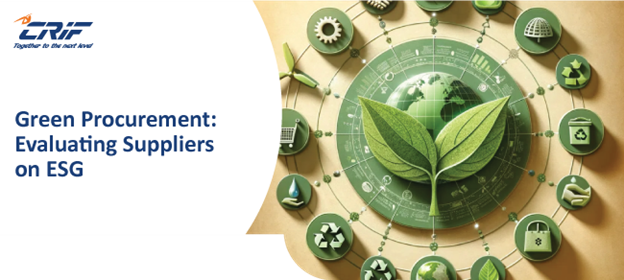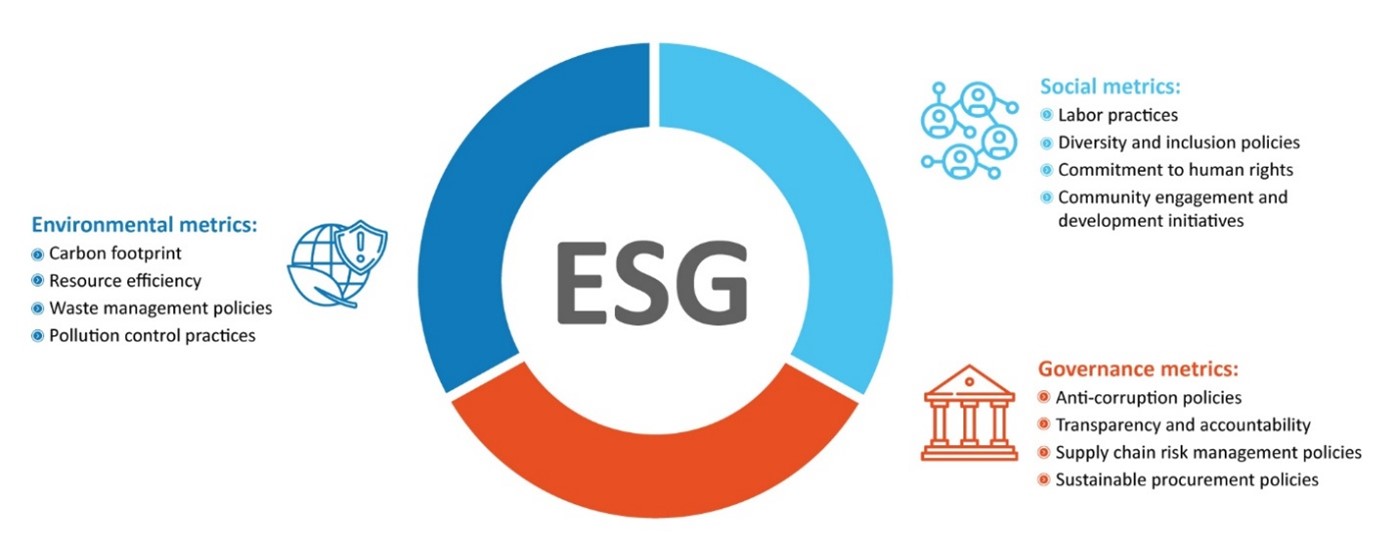As ESG procurement becomes essential for corporate sustainability, businesses must evaluate suppliers on key ESG parameters. With evolving regulations like the Corporate Sustainability Reporting Directive (CSRD) and Scope 3 emission tracking, integrating green procurement practices is no longer optional—it's a necessity. However, the evolving regulatory landscape, such as the Corporate Sustainability Reporting Directive and the Carbon Border Adjustment Mechanism, demands comprehensive emission reporting and transparency, especially when it comes to Scope 3 emissions. This is forcing businesses to dive deeper into the environmental impact of their entire supply chains and focus on green supply chain and procurement management.

Many businesses' corporate sustainability strategies include ESG performance assessments of the organisation. However, when it comes to incorporating green procurement practices into the company’s strategic position, suppliers and vendors within the supply chain play a key role in ESG implementation, reporting, and compliance.
Now, how can you evaluate your suppliers on ESG parameters to ensure they are ESG compliant? Let’s find out.
ESG Procurement: Key Factors for Supplier Evaluation
The ESG framework focuses on sustainability assessment in three areas: environmental, social, and governance. The environmental assessment focuses on the impact of procurement operations on the surrounding ecosystems, evaluating measures to manage carbon footprints and combat climate change.
The assessment of the social factors focuses on how procurement and supply chain management strategies affect the people involved and local communities, assessing parameters like working conditions, wages, the availability of equal opportunities, and adherence to human rights.
Lastly, the governance factors focus on the inner workings of an organisation (or suppliers), including internal processes and policies, business ethics, anti-corruption measures, and management structure.
All these factors can impact the overall corporate sustainability goals of a business and brand image – especially if they are associated with a supplier that does not focus on ESG sustainability. Focusing on the ESG impact during supplier selection and assessment can help businesses improve their financial performance and brand value, limit risk exposure, and ensure regulatory compliance across their supply chain.
Steps to Evaluate Suppliers on ESG Parameters
Evaluating suppliers on ESG parameters can help businesses further enhance their corporate sustainability strategies, allowing them a holistic view of the company’s ESG performance. Additionally, this can also help businesses find the right strategic partners that can help their business grow sustainably.
Here are three steps you can take to evaluate suppliers on ESG parameters to ensure sustainable procurement management:
ESG Performance Assessment
The first step is defining and benchmarking the ESG criteria you want to achieve and assessing the suppliers on ESG performance against these benchmarks. The KPIs that can help simplify this assessment include:

Analysing data about these parameters can help you assess the suppliers on ESG criteria. Tools like Synesgy can help you use a standardised framework when undertaking this assessment. This ESG self-assessment tool can help you collect and manage sustainability information, evaluate supply chain sustainability, benchmark performance, and receive guidance to overcome any shortcomings. Incorporate the Synesgy score model to benchmark sustainability performance and build the action plan to achieve your sustainable procurement goals.
Integrating ESG into Supplier Selection
Once you have an evaluation framework, like Synesgy, in place, the next step is to incorporate that assessment criteria into the supplier selection process. Requesting necessary information at the screening stage can help you assess whether your sustainability goals align with the suppliers, and they can be strategic partners in your corporate sustainability strategies.
Integrating the ESG metrics and Synesgy scoring model into the core sourcing strategies is essential to managing the company's overall carbon footprint, especially the Scope 3 emissions that the company has no direct control over.
Continuous Monitoring and Improvement
Sustainability goals and ESG standards are constantly evolving. The last, but probably the most critical, step is to implement a continuous monitoring system for the suppliers and keep improving your corporate sustainability strategies to address any ESG compliance gaps.
Tools like Synesgy can help you stay on top of your suppliers’ sustainability performance and see how they evolve with the changing ESG standards and regulations. This can help ensure that you remain compliant with the ESG green procurement and supply chain management regulations and prevent operational and reputational risks of non-compliance from the suppliers.
Conclusion – Strengthening ESG in Procurement for a Sustainable Supply Chain
As businesses try to navigate the evolving regulatory requirements and consumer expectations, integrating ESG in procurement has become more important than ever. Working with ESG-compliant suppliers is key to driving supply chain sustainability and achieving long-term business resilience.
By evaluating suppliers on ESG parameters, companies can enhance transparency, reduce risks, and align with green procurement standards. Tools like CRIF Synesgy simplify the supplier assessment process, ensuring compliance and promoting sustainable procurement strategies.
Simplify ESG procurement with CRIF Synesgy! Assess supplier compliance, reduce risks, and achieve a sustainable green procurement strategy. Get started today!

